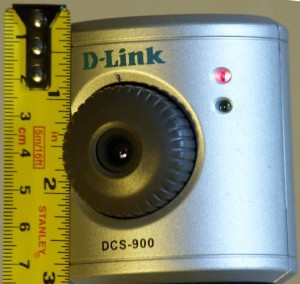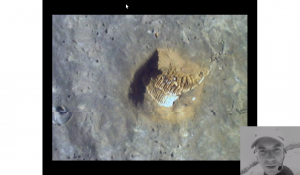Once our netbooks have their operating systems and software installed on them, when they’ve been tested and tinkered with, it’d be a shame to have to do all that again without good reason. To avoid wasting time in the future, it makes sense to back-up the whole system whilst it’s nice and tidy, so if there are problems later we can roll back to a ‘known good’ installation quickly. There are several packages for doing this – Norton Ghost and Ghost-4-Unix are well known, but a slightly obscure project from the Taiwanese National Centre for High-performance Computing called Clonezilla beats them all on either price or performance, or both. Continue reading
Author Archives: John
UNR, revisited.
One of our netbooks needed rebuilding recently, and since we’ve not documented the installation procedure we used, now seems like a good time. We’ve been running our Asus EEE 901s on Ubuntu Netbook Remix 9.04 (UNR), since the supplied Xandros is a little unfamiliar and limited for our needs. It’s mostly like normal Gnome-based Ubuntu except that it fixes some issues specific to netbooks, e.g. the small screen. There are similar distributions available – EasyPeasy and Moblin for instance, but we’ve been using UNR. Continue reading
Axis of Openness
Frustrated with the poor image quality and/or interfaces of our existing IP cameras, it’s time to search for better alternatives. New trends in IP camera technology include megapixel sensors, h.264 video encoding and, reportedly, open standards. There are several interesting open standards cameras on the market already:
- The stunningly high resolution Elphel series, which have a HD ‘film’ maker/developer community around them.
- The Freescale i.MX27 open reference design, again with a developer and enthusiast community.
- Enthusiast-developed projects around existing (proprietory interface) IP cameras; Edimax make some very affordable cameras, there are similarities between this and the famous Linksys WRT-54g firmware projects.
- Axis, one of the leading IP video hardware manufacturers, already has a history of open-standards involvement and is a part of the ONVIF open-interface group.
Testing IP cameras, part 2
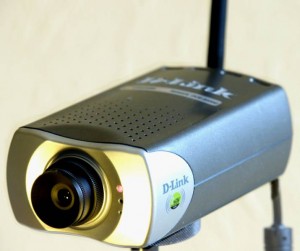 Now we’ve seen that the nice and simple DCS-900 is pretty handy when controlled from Linux with no ActiveX. Time to examine the much more complex DCS-3220g, which should give us MPEG-4 encoded video. It’s another rebadged Vivotek as far as we can tell. This camera has a built-in WiFi radio as well as wired ethernet, has an interchangeable lens and should support a 2-way audio link. It comes with a Windows software package for managing multiple cameras. Continue reading
Now we’ve seen that the nice and simple DCS-900 is pretty handy when controlled from Linux with no ActiveX. Time to examine the much more complex DCS-3220g, which should give us MPEG-4 encoded video. It’s another rebadged Vivotek as far as we can tell. This camera has a built-in WiFi radio as well as wired ethernet, has an interchangeable lens and should support a 2-way audio link. It comes with a Windows software package for managing multiple cameras. Continue reading
Testing IP cameras – pt.1
Since ERA already has some IP cameras from previous years, it’s probably time to dust them off and try them out with the new Asus 901s. We have a pair of D-Link badged items – a DCS-900 wired-only Motion-JPEG camera with a maximum resolution of 640×480 pixels, and a much fancier DCS-3220g which has 802.11g WiFi as well as wired ethernet, full PAL -sized MPEG-4 as well as Motion-JPEG output, sound support via an internal mic and line output socket and an interchangeable CS-mount lens. Continue reading
Using smartphones as …phones.
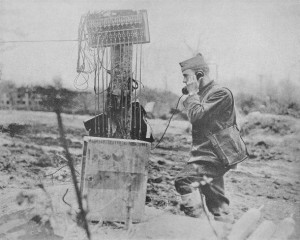
An early outdoor phone exchange
Could it be that the way to make a telephone call on a geology site would be to use a telephone? Now we seem to have some fairly stable WiFi networking hardware, and are considering that we might ditch the awkward netbooks for our ‘Sherpas’ in the field, perhaps we could use WiFi equipped smartphones for some of our outdoor networking needs?
Since we’re using SIP, we’ll need SIP software for any mobile phones we use, and there are obvious commercial reasons why most mobile service providers aren’t keen on this, but on the up side, bluetooth headsets are designed to be used with mobile phones so this could add another useful feature to the ERA toolkit.
Investigating video upgrades
During our field trials, it became clear that the built-in video camera on the Asus EEE 901 (and 701) is in the wrong place for our needs.
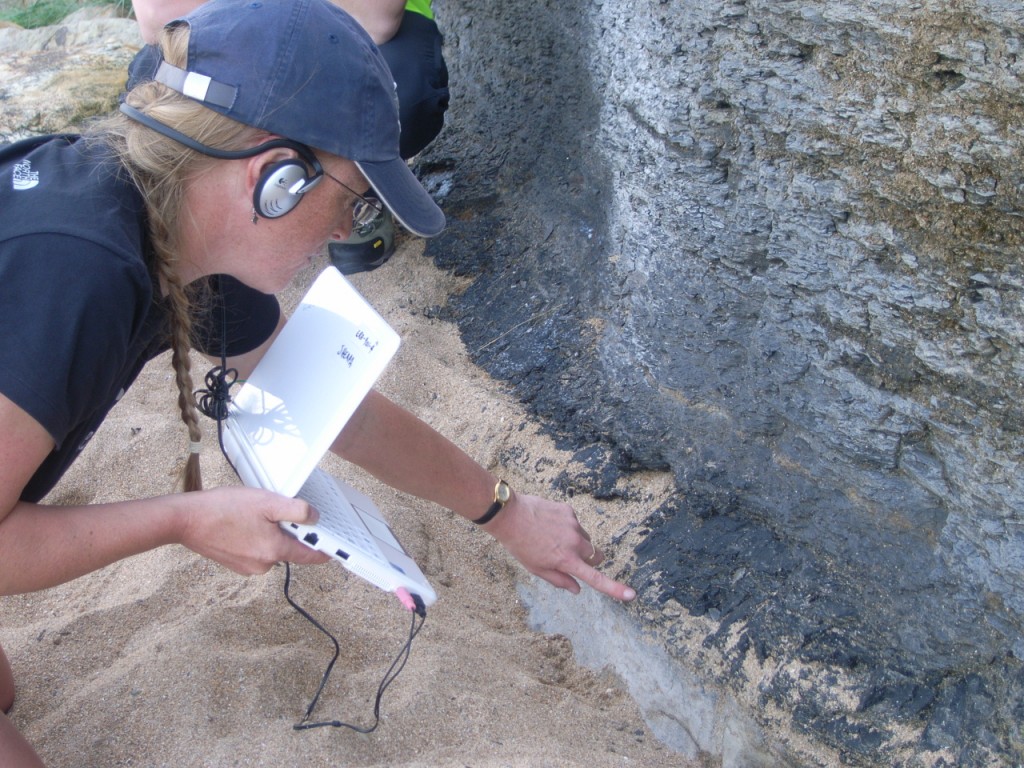
Using the Asus Eee PC 701's built in camera to capture geological features. The camera is built in to the top of the screen and is clearly designed for 'video diaries' or online video conferencing rather than capturing views of the landscape.
The 901 camera itself is a pretty good (for a plastic lens webcam) 1.3 megapixel device that’s supported in Ubuntu, but it faces the user, and we want it to face the rest of the world. Additionally, we found when using an external USB webcam, that being able to hold a smaller separate device or mount it on a helmet, rather than trying to point a whole netbook, was both easier and safer when clambering about on the rocks. From our experience and listening to the field geologists, we came up with a wish list of properties for a new video camera… Continue reading
Googlemaps links
Some annotated maps of our adventures on the North East coast :
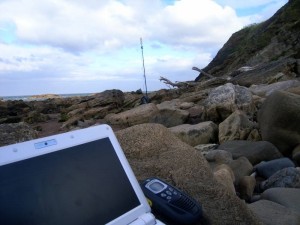
ERA kit on the beach at Scremerston
Seaton Sluice – visited on 01/08/09
Hartley Bay – visited on 01/08/09
Scremerston – visited on 04/08/09
Saltwick Bay – visited on 05/08/09
Howick – Rumbling Kern and Howick Haven, visited on 07/08/09.
Durham field tests
The ERA team has just returned from a week-long field trip in the North East of England, based at Durham University. We did tests at locations related to OU Geology module SXR369 along the Northumberland coastline. We trialled new (to us) VoIP services including 2-way video with a view to assisting students with limited mobility to experience geological fieldwork alongside their more mobile peers. Expect to see some news and test results here in the next few days.
Clifftop multi-hop: Scremerston
Today’s visit brought us to the dramatic coastal features of Scremerston, just south of Berwick-upon-Tweed. This is a tough location for Assisted Requirements students as the high, steep cliff face can be quite challenging to negotiate for anyone. The closest practical access is down a gravelled lane (which could be driven up at a push), stopping before the gate to a muddy field full of cows. From there, the beach site (which should be visited on a falling tide) is accessed down a grassy cliff face 300m or so from the gate. From the beach access, the geological study site is quite stretched out along the sea front, with features jutting out from the cliff base into the sea.

